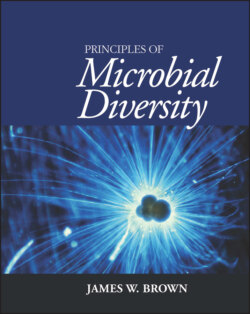Читать книгу Principles of Microbial Diversity - James W. Brown - Страница 10
Оглавление
Preface
ALTHOUGH IT HAS BEEN RECOMMENDED that undergraduate curricula for microbiology majors require a core course on microbial diversity, microbiology programs most often lack such a course. One reason for this lack is that, unlike the other recommended core microbiology courses, there has been no appropriate textbook on microbial diversity for students at the undergraduate level. Principles of Microbial Diversity is intended to fill this gap.
This textbook is intended primarily for junior and senior undergraduate students who are majoring in microbiology or a related field. Students should already have studied a general microbiology course and should have familiarity with genetics and either biochemistry or microbial physiology. The perspective in this book is phylogenetic and organismal, from the Carl Woese school (in contrast to the approach of most general microbiology textbooks) (1). This textbook arose from an existing senior-level lecture/lab course on microbial diversity and so has been in use with success already.
The book comprises four main sections. The first section is introductory, laying out the scope of the text, defining the perspective, and providing a historical context. This is followed by a practical guide to molecular phylogenetic analysis, focusing on how to create and interpret phylogenetic trees, and an overview of “the Tree of Life.” The second section is a tour through each of the major familiar phylogenetic groups of Bacteria and Archaea (microbial eukaryotes and viruses are also covered briefly), discussing the general properties of the organisms in each group, describing some representatives in more detail, and concluding with one or two specific topics on the unique properties of these organisms.
The third section of the book is conceptually and experimentally defined (based on primary literature), beginning with identification of unknown and potentially uncultivable organisms and leading to molecular surveys of populations, linking processes with specific organisms. This sequence leads to the final section, brief discussions of various aspects of microbial genomics and origins.
The most straightforward approach for covering the two large middle sections of the textbook in class is to start with the survey of phylogenetic groups and follow this with the concept/literature chapters. An alternative approach, which I have used with great success, is to intertwine them. In my experience, each lecture begins with the discussion of a particular microbial phylum (a portion of a chapter in section two), with some discussion of general topics raised about these organisms, leading into one of the papers from sections three and four of the textbook (or a more recent paper chosen by the instructor) that highlights organisms in the group discussed in that lecture. For example, a chapter might start out with a discussion of the Chlamydiae, describing the members of the group, their phenotype, pathogenicity, and life cycle, and be followed by a discussion of reductive evolution in parasites. It would then shift gears to an introduction to genomics, exemplified by the paper describing the Protochlamydia amoebophila genome and what it teaches us about the origin of obligate pathogens. The order of topics, as would be taught in the course, would be defined by the conceptual thread (section four of the text), building in complexity.
1 1. Woese CR. 2006. A new biology for a new century. Microbiol Mol Biol Rev 68:173–186. doi:10.1128/MMBR.68.2.173-186.2004
